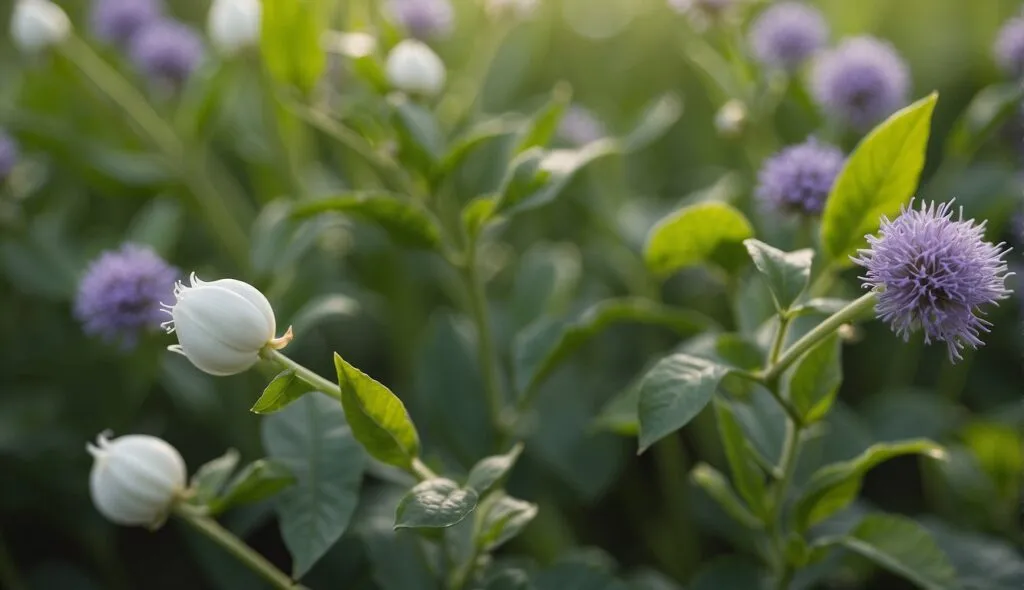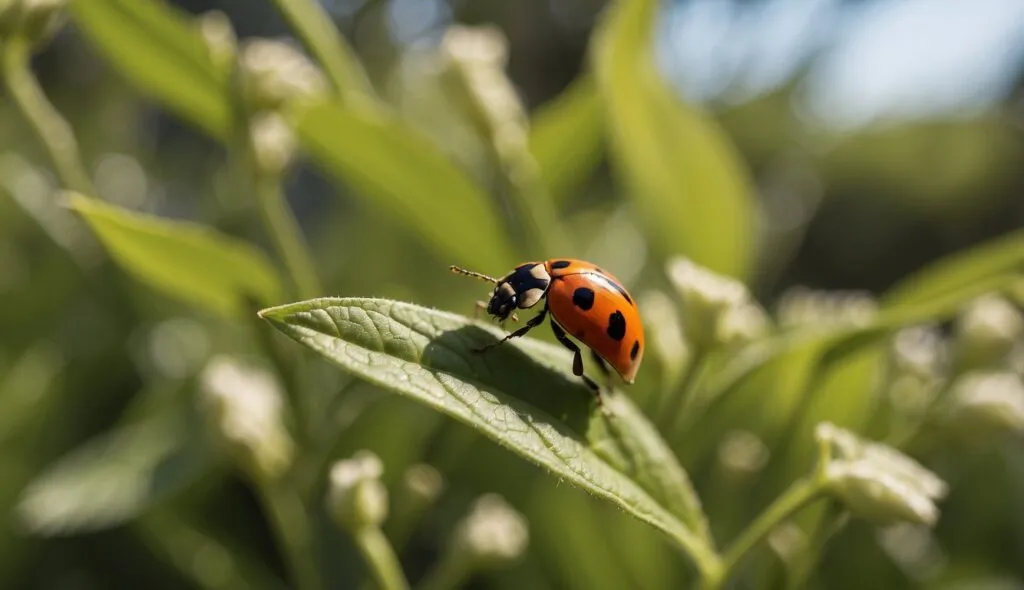Organic insect management is a crucial aspect of sustainable agriculture, focusing on the use of natural and environmentally friendly methods to control pests without relying on synthetic chemicals. As advocates for organic farming practices, we understand the significance of implementing pest management strategies that prioritize the health of the ecosystem and the well-being of crops. By adopting biological and mechanical control methods, organic farmers can effectively minimize the impact of pests while promoting a balanced and sustainable environment.
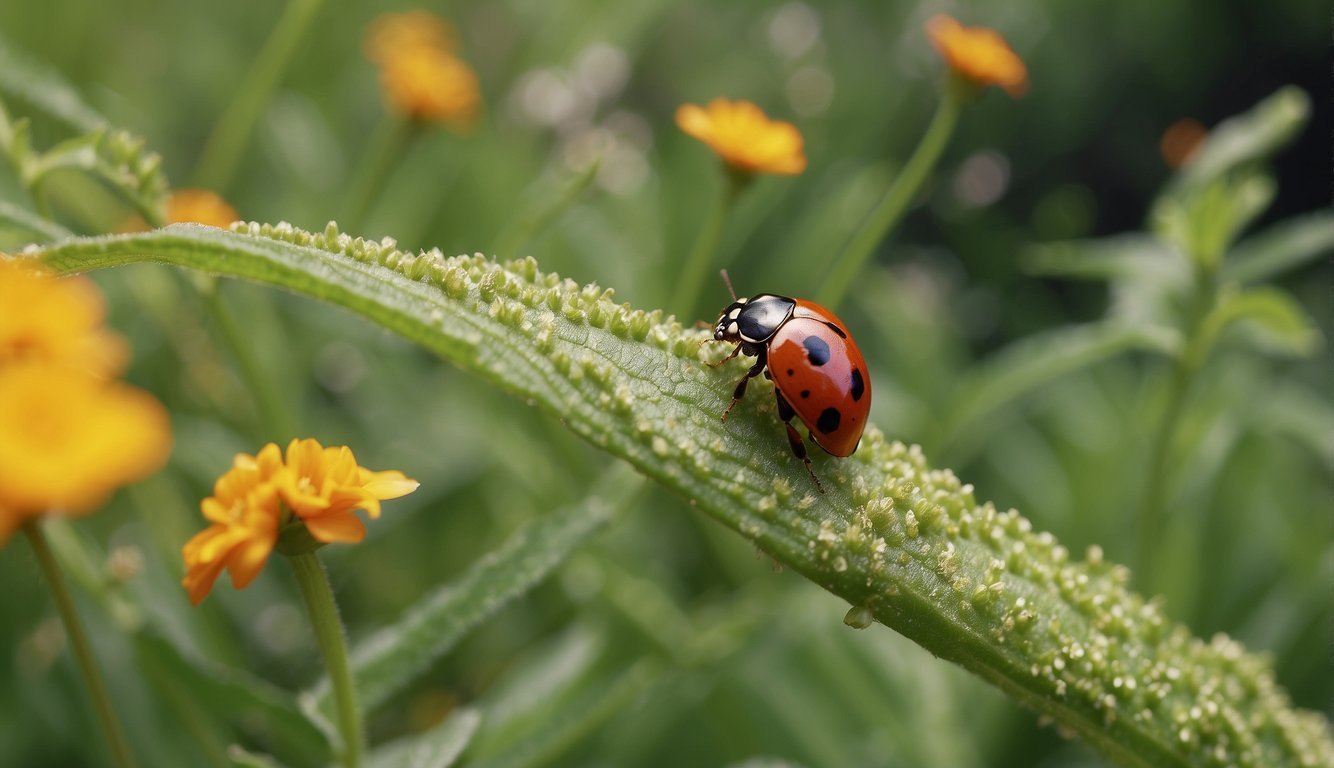
Our commitment to organic insect management extends beyond the application of natural and organic pesticides. We recognize the importance of conservation and education in fostering a holistic approach to pest control. Through the integration of diverse and resilient agricultural systems, we aim to mitigate pest-related risks while enhancing the overall sustainability of organic farming practices. By sharing knowledge and best practices, we can empower farmers to make informed decisions that align with ecological principles, ultimately contributing to the long-term health and vitality of agricultural landscapes.
Table of Contents
Key Takeaways
- Organic insect management emphasizes natural and environmentally friendly methods for pest control in sustainable agriculture.
- Biological and mechanical control methods play a vital role in minimizing the impact of pests and promoting a balanced ecosystem.
- Conservation and education are integral to fostering holistic pest management strategies that enhance the sustainability of organic farming practices.
Understanding Pest Management
As organic growers, we understand that pests, diseases, and pathogens are a natural part of the ecosystem and can cause significant damage to our crops. However, we also know that using chemical pesticides can have negative impacts on the environment and human health. Therefore, we rely on organic insect management techniques to prevent and control pest infestations.
Integrated Pest Management (IPM) is a key component of organic insect management. It involves the use of multiple techniques to manage pests while minimizing collateral damage to the environment. IPM includes pest identification, monitoring, prevention, and suppression. By using these techniques together, we can create a healthy and balanced ecosystem that is less susceptible to pest infestations.
Pest identification and monitoring are crucial steps in IPM. By identifying the pests that are present in our fields, we can choose the most effective control methods. Monitoring also allows us to track pest populations and determine if our control methods are working. We can use a variety of methods to monitor pests, including traps, visual inspections, and pheromone lures.
Prevention is another important aspect of IPM. We can prevent pest infestations by using cultural practices such as crop rotation, intercropping, and cover cropping. These practices can help to reduce pest populations by disrupting their life cycles and creating a less favorable environment. Sanitation is also important in preventing pest infestations. By removing plant debris and other potential pest habitats, we can reduce the likelihood of infestations.
Beneficial insects are another tool in our organic insect management toolbox. By attracting and conserving beneficial insects such as ladybugs, lacewings, and parasitic wasps, we can reduce pest populations without using chemical pesticides. These insects can be attracted to our fields by planting flowers and providing other habitats.
Overall, organic insect management is a holistic approach that requires careful planning and attention to detail. By using IPM techniques, we can create a healthy and balanced ecosystem that is less susceptible to pest infestations.
Organic Farming Practices
Organic farming practices focus on maintaining soil health, increasing crop diversity, and using natural methods for pest management. By prioritizing these practices, we can create a sustainable and healthy farming system that benefits both the environment and consumers.
Soil Health and Fertility
Healthy soil is the foundation of organic farming. We prioritize practices that build soil health, such as crop rotation, mulching, and composting. By rotating crops, we can prevent soil depletion and promote biodiversity. Mulching helps to retain moisture in the soil and suppress weed growth. Composting organic materials helps to create nutrient-rich soil that is beneficial for plant growth.
We use organic fertilizers and soil amendments that are approved by the Organic Materials Review Institute (OMRI) and the National Organic Program (NOP). We also conduct regular soil tests to ensure that our soil is healthy and balanced. By prioritizing soil health, we can create a sustainable and productive farming system.
Crop Diversity and Rotation
Crop diversity and rotation are key components of organic farming. We prioritize growing a variety of crops and rotating them to prevent soil depletion and promote biodiversity. Intercropping and cover cropping are also important practices that promote biodiversity and help to control pests.
By using these cultural practices, we can create a healthy and diverse farming system that is better equipped to handle pests and disease. We prioritize natural methods for pest management, such as using beneficial microbes and predators, and only use approved organic pesticides as a last resort.
Overall, organic farming practices prioritize the health of the soil, the environment, and consumers. By using natural methods for pest management and prioritizing soil health and biodiversity, we can create a sustainable and healthy farming system.
Biological and Mechanical Control
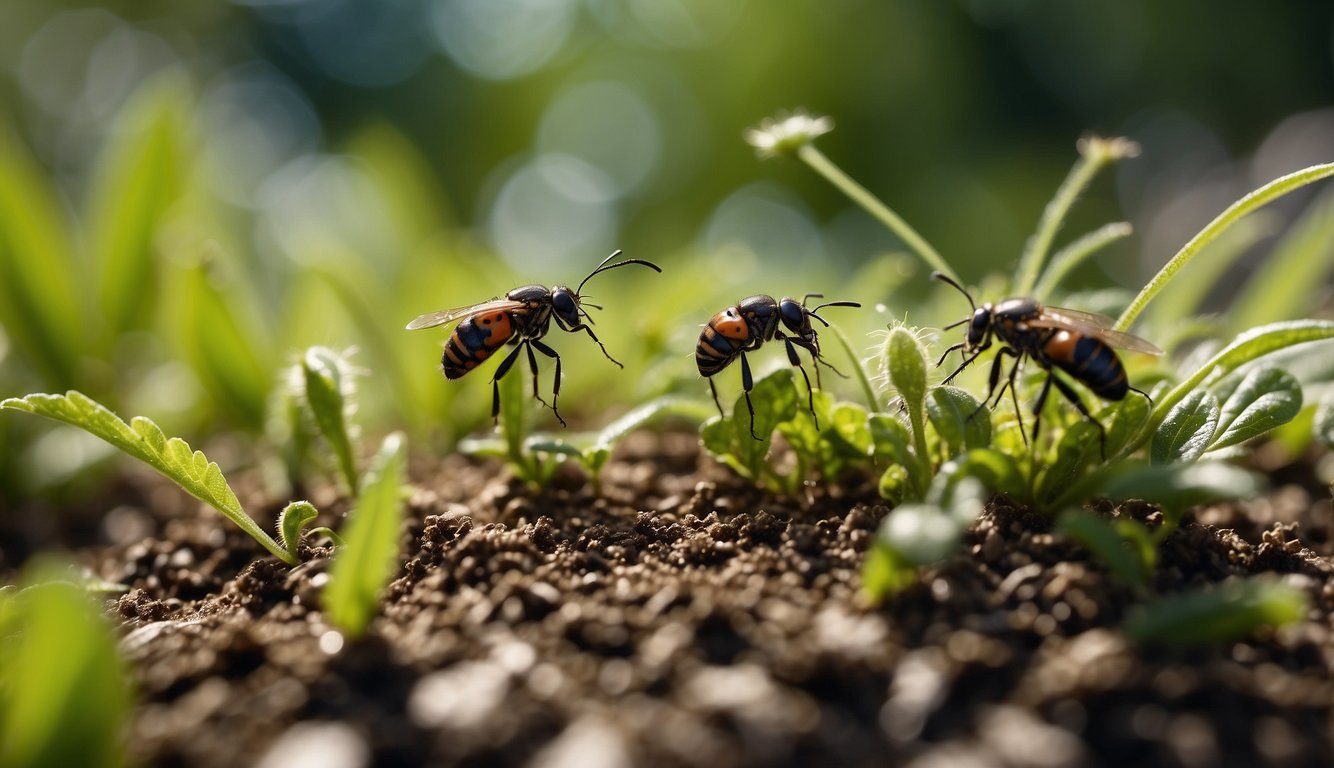
When it comes to organic insect management, we rely on biological and mechanical control methods to reduce the impact of pests on crops. Biological control involves using natural enemies of pests, such as predators and parasitoids, to control their populations. This method is preferred over chemical control as it is environmentally friendly and does not harm beneficial insects.
One of the most effective biological control methods is the use of entomopathogenic nematodes. These are microscopic worms that infect and kill insect pests. They are safe for humans, animals, and the environment, making them a popular choice for organic farming.
In addition to biological control, we also use mechanical practices to control pests. Mechanical control involves the use of physical methods to prevent or remove pests from crops. This includes practices such as trap crops, fruit bagging, and the use of physical barriers to prevent pests from accessing crops.
Trap crops are plants that are grown specifically to attract pests away from the main crop. This reduces the damage caused by pests to the main crop. Fruit bagging involves covering fruit with a mesh bag to prevent pests from accessing them. This is particularly useful for crops such as apples and pears, which are often attacked by fruit flies.
Overall, the use of biological and mechanical control methods is essential for effective organic insect management. These methods are environmentally friendly, safe for humans and animals, and help to maintain the health of crops without the use of harmful chemicals.
Natural and Organic Pesticides
When it comes to managing pests in an organic way, natural and organic pesticides are the go-to solution. These pesticides are derived from natural sources such as plants, minerals, and animals, and are formulated to control pests without harming the environment or human health.
Biopesticides are one type of natural pesticide that are derived from living organisms such as bacteria, fungi, and viruses. These pesticides work by controlling pests through natural mechanisms such as competition, parasitism, and predation.
Botanicals are another type of natural pesticide that are derived from plant extracts. They are effective against a wide range of pests and have a low toxicity to non-target organisms. Azadirachtin is a popular botanical pesticide that is derived from the neem tree and is effective against a wide range of pests including aphids, thrips, and whiteflies.
Pyrethrins are natural insecticides that are derived from chrysanthemum flowers. They are effective against a wide range of pests including mosquitoes, flies, and fleas. Pyrethrins are also used in combination with other pesticides to enhance their effectiveness.
Insecticidal soaps are another type of natural pesticide that are made from potassium salts of fatty acids. They are effective against soft-bodied insects such as aphids, mites, and whiteflies. Insecticidal soaps work by disrupting the cell membranes of the insects, causing them to dehydrate and die.
Pheromones are natural chemicals that are produced by insects to communicate with each other. Synthetic versions of these chemicals can be used to disrupt the mating behavior of pests such as moths and beetles. This can help to reduce the population of these pests without the need for toxic pesticides.
When using natural and organic pesticides, it is important to choose products that are certified by the Organic Materials Review Institute (OMRI). This ensures that the products are compliant with organic standards and are safe for use in organic farming.
Conservation and Education

Conservation of natural enemies is one of the most important aspects of organic insect management. By encouraging the presence of beneficial insects, such as ladybugs, lacewings, and parasitic wasps, we can reduce the population of harmful insects and minimize the need for pesticides. This can be achieved through a variety of methods, such as planting insectary strips, using cover crops, and reducing tillage.
Education is also a crucial component of organic insect management. By providing farmers with the knowledge and tools they need to identify and manage pests, we can reduce reliance on synthetic pesticides and promote sustainable agriculture. Organizations such as Sustainable Agriculture Research and Education (SARE) and the National Institute of Food and Agriculture (NIFA) offer resources and funding opportunities for farmers and researchers to develop and implement effective pest management strategies.
Taking a holistic approach to pest management is key to success. This involves considering the entire ecosystem, including soil health, crop rotation, and other factors that can influence pest populations. By addressing the root causes of pest problems, we can reduce the need for reactive measures such as pesticides.
Recent meta-analyses have shown that organic insect management can be just as effective as conventional methods. By combining conservation, education, and a holistic approach, we can continue to improve our understanding and implementation of organic insect management, and promote a more sustainable and healthy food system for all.
Conclusion
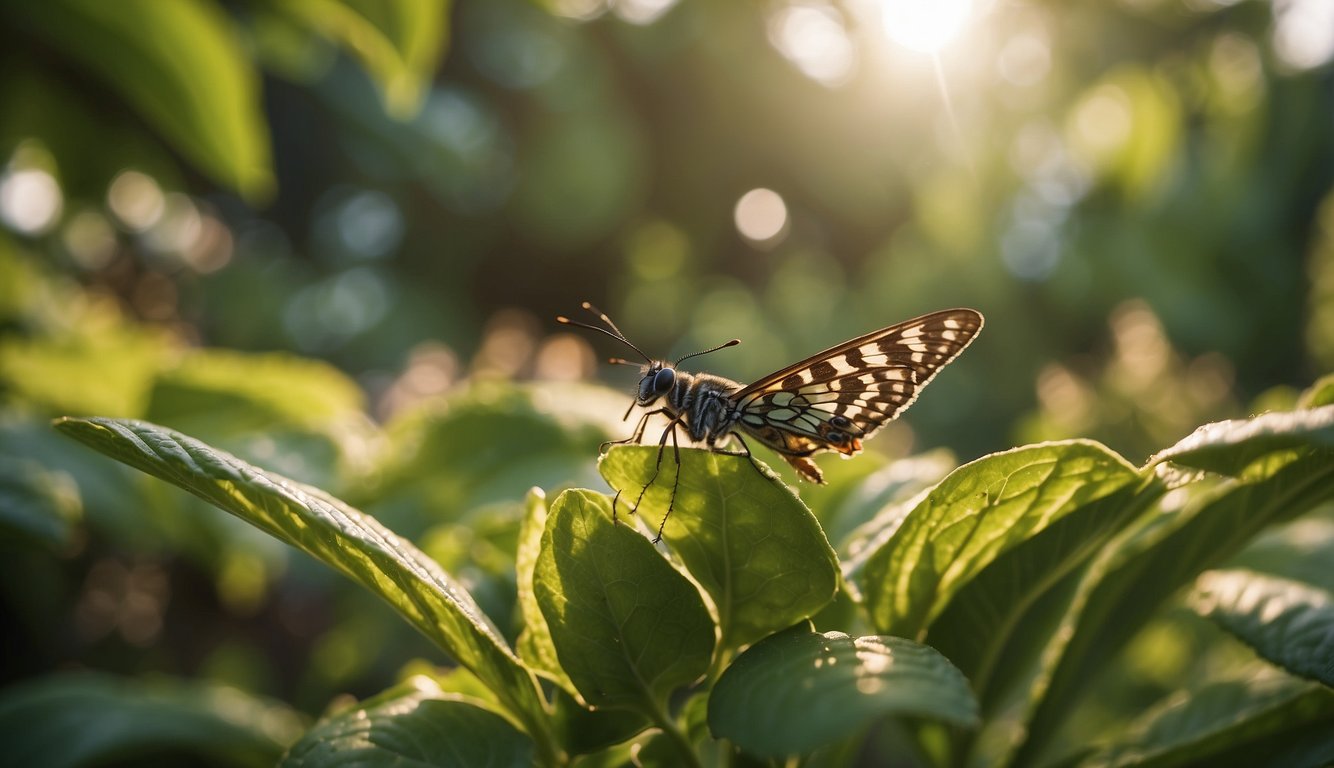
In conclusion, organic insect pest management is a complex and challenging aspect of agricultural production. Our research shows that organic management practices can enhance crop health and reduce losses due to weeds, disease, and pests. The four principles of pest management in organic farming systems, namely prevention, avoidance, monitoring, and suppression, are key to an integrated approach to organic pest management.
We found that cultural practices, physical and mechanical techniques, and biological control methods are acceptable management practices for organic pest control. These methods can be used to prevent pest infestations, reduce pest populations, and control pest damage in an environmentally friendly manner.
It is important to note that organic insect pest management requires a thorough understanding of the farm ecosystem. This understanding can help farmers manipulate the ecosystem in a way that it is self-regulating in terms of pests. By implementing these practices, farmers can improve the quality and yield of their crops while also protecting the environment.
In summary, organic insect pest management is a crucial aspect of sustainable agriculture. By utilizing the principles and practices outlined in this article, farmers can effectively manage pests while also promoting healthy crops and ecosystems.
Frequently Asked Questions
What are the most effective natural pest control methods used in agriculture?
In agriculture, natural pest control methods include the use of beneficial insects, crop rotation, trap cropping, and companion planting. Beneficial insects such as ladybugs, lacewings, and parasitic wasps can help control pests by eating them or laying eggs inside them. Crop rotation involves planting different crops in the same field each year to reduce pest populations. Trap cropping involves planting a crop that is attractive to pests to lure them away from the main crop. Companion planting involves planting two or more crops together that have a mutually beneficial relationship, such as repelling pests or attracting beneficial insects.
How do organic farmers manage pest and disease without synthetic chemicals?
Organic farmers use a variety of methods to manage pests and diseases without synthetic chemicals. These methods include crop rotation, planting pest-resistant crops, using natural predators and parasites, and maintaining healthy soil. Organic farmers also use cultural practices such as pruning, sanitation, and proper irrigation to reduce the risk of disease. Additionally, organic farmers use organic approved pesticides made from natural substances such as plant oils, minerals, and bacteria.
Can organic pest control be as effective as conventional methods?
Organic pest control can be as effective as conventional methods if the farmer uses a combination of methods and practices. Organic farmers must be diligent in monitoring their crops for pests and diseases and take appropriate actions to manage them. Organic farmers must also maintain healthy soil and use crop rotation to reduce pest populations. While organic pest control may take longer to show results, it can be just as effective as conventional methods in the long run.
What is Integrated Pest Management (IPM), and how does it relate to organic farming?
Integrated Pest Management (IPM) is a pest control strategy that uses a combination of methods to manage pests. IPM includes cultural, mechanical, biological, and chemical control methods. Organic farming is a type of IPM that emphasizes the use of cultural, mechanical, and biological control methods. Organic farmers use IPM principles to manage pests and diseases in a way that is consistent with organic standards.
What are the top organic insect management products recommended for farmers?
The top organic insect management products recommended for farmers include neem oil, pyrethrin, spinosad, and Bacillus thuringiensis (Bt). Neem oil is a natural insecticide made from the seeds of the neem tree. Pyrethrin is a natural insecticide made from chrysanthemum flowers. Spinosad is a natural insecticide made from a soil bacterium. Bt is a natural insecticide made from a soil bacterium that is effective against certain types of caterpillars.
What are the best practices for weed management in organic farming systems?
The best practices for weed management in organic farming systems include crop rotation, mulching, hand weeding, and flaming. Crop rotation can help reduce weed populations by disrupting their life cycle. Mulching can help suppress weed growth by blocking out light. Hand weeding involves physically removing weeds by hand. Flaming involves using a propane torch to burn weeds. These methods can be used individually or in combination to effectively manage weeds in organic farming systems.

